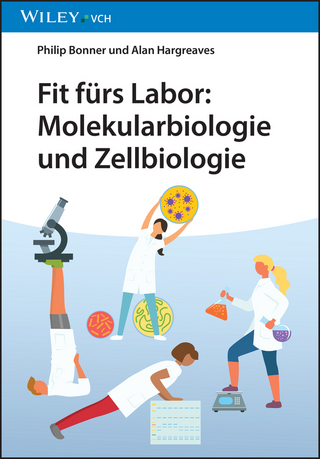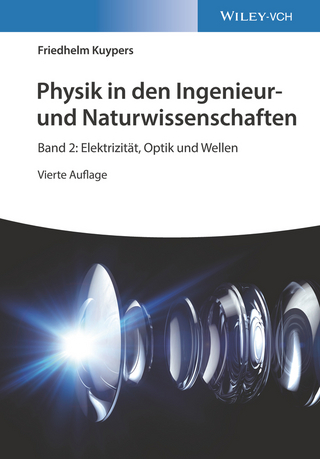
Computer-Assisted Microscopy
Kluwer Academic / Plenum Publishers (Verlag)
978-0-306-43410-5 (ISBN)
- Titel ist leider vergriffen;
keine Neuauflage - Artikel merken
Likewise, the book assumes little in the way of a mathematical background, but the researcher with a secure knowledge of appropriate statistical tests will find it easier to put some of these methods into real use, and have confidence in the results, than one who has less background and experience. Supplementary texts and courses in statistics, microscopy, and specimen preparation are recommended as necessary.
1 Introduction.- The importance of images.- Why measure images?.- Computer methods: an overview.- Implementation.- Acquisition and processing of images.- Measurements within images.- More than two dimensions.- 2 Acquiring Images.- Image sources.- Multi-spectral images.- Image sensors.- Digitization.- Specifications.- References.- 3 Image Processing.- Point operations.- Time sequences.- Correcting image defects - averaging to reduce noise.- Reducing noise in a single image.- Frequency space.- Color images.- Shading correction.- Fitting backgrounds.- Rubber sheeting.- Image sharpening.- Focussing images.- References.- 4 Segmentation of Edges and Lines.- Defining a feature and its boundary.- Roberts' cross edge operator.- The Sobel and Kirsch operators.- Other edge-finding methods.- Other segmentation methods.- The Hough transform.- Touching features.- Manual outlining.- References.- 5 Discrimination and Thresholding.- Brightness thresholds.- Thresholding after processing.- Selecting threshold settings.- The need for automatic thresholding.- Automatic methods.- Histogram minimum method.- Minimum area sensitivity method 1ll.- Minimum perimeter sensitivity method.- Reproducibility testing.- Fixed percentage setting.- Color images.- Encoding binary images.- Contiguity.- References.- 6 Binary Image Editing.- Manual editing.- Combining images.- Neighbor operations.- Skeletonization.- Measurement using binary image editing.- Covariance.- Watershed segmentation.- Mosaic amalgamation and fractal dimensions.- Contiguity and filling interior holes.- References.- 7 Image Measurements.- Reference areas.- Boundary curvature.- Feature measurements.- Perimeter points.- Length and breadth.- Radius of curvature.- Image processing approaches.- Counting neighbor patterns.- Shape.- Corners as a measure of shape.- Harmonic analysis.- Position.- Neighbor relationships.- Edge effects.- Brightness.- References.- 8 Stereological Interpretation of Measurement Data.- Global measurements.- Global parameters.- Mean free path.- Problems in 3-D interpretation.- Feature specific measurements.- Distribution histograms of size.- Interpreting distributions.- Nonparametric tests.- Cumulative plots.- Plotting shape and position data.- Other plots.- References.- 9 Object Recognition.- Locating features.- Parametric object description.- Distinguishing populations.- Decision points.- Other identification methods.- An example.- Comparing multiple populations.- An example of contextual learning.- Other applications.- Artificial intelligence.- References.- 10 Surface Image Measurements.- Depth cues.- Image contrast.- Shape from texture.- The scanning electron microscope.- Line width measurement.- Roughness and fractal dimensions.- Other surface measurement methods.- References.- 11 Stereoscopy.- Principles from human vision.- Measurement of elevation from parallax.- Presentation of the data.- Automatic fusion.- Stereoscopy in transparent volumes.- References.- 12 Serial Sections.- Obtaining serial section images.- Optical sectioning.- Presentation of 3-D image information.- Aligning slices.- Displays of outline images.- Surface modelling.- Measurements on surface-modelled objects.- Voxel displays.- Measurements on voxel images.- Network analysis.- Connectivity.- References.- 13 Tomography.- Reconstruction.- Instrumentation.- 3-D Imaging.- References.- 14 Lessons from Human Vision.- The language of structure.- Illusion.- Conclusion.- References.- For further reading.
| Zusatzinfo | biography |
|---|---|
| Verlagsort | Dordrecht |
| Sprache | englisch |
| Gewicht | 833 g |
| Einbandart | gebunden |
| Themenwelt | Naturwissenschaften ► Biologie ► Allgemeines / Lexika |
| ISBN-10 | 0-306-43410-5 / 0306434105 |
| ISBN-13 | 978-0-306-43410-5 / 9780306434105 |
| Zustand | Neuware |
| Informationen gemäß Produktsicherheitsverordnung (GPSR) | |
| Haben Sie eine Frage zum Produkt? |
aus dem Bereich


